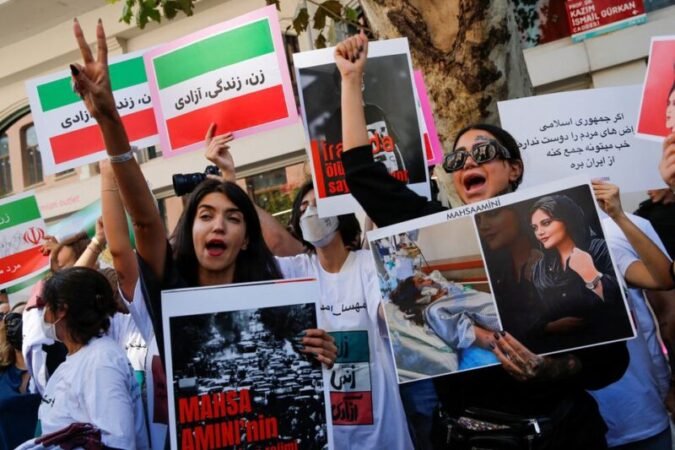Iran and the Voice of Resentment

What happens when the females of a country decide to roar? The answer is what can be witnessed in Iran today. The country is going through one of the toughest phases. Women are in the streets cutting down their hair, and openly burning their hijab. The police are using tear gas, lodging up the lockups but prima facie it seems to have no effect on the protestors. up the lockups but prima facie, it seems to have.
It all started with the alleged murder of a 22-year-old Kurdish girl Mahsa Amini on September 16. The girl was going to meet her relatives in Tehran from the city of Kurdistan in Iran. As per the family and other witnesses, the police arrested her for violating the law related to the women’s dress. The fuel sparked when the girl was allegedly beaten inside the police van for the same. However, the police have denied the said claims. It was notified by them that she was taken to ICU because of the heart attack, while the family claims it was because of the injury attained.
What does the law state?
Mahsa Amini was arrested for violating the hijab rules and the act was an elephant in the room from the context of Iran as the country follows the Sharia or Islamic law. It is the same law which is followed by the Taliban regime in Afghanistan in its stricter form. Article 638 of the Iranian Penal Code law therefore explicitly states “All females are required to cover their hair and dress modestly from the age of puberty”. Other than that, it also incurs a penalty of 2 months of imprisonment, or the offender has to go through 74 lashes.
Therefore, women in Iran are not allowed to go in public without covering their heads. If this was not enough, the country also employed morality police which keeps a check on these apparently “immoral” acts. This Guidance Patrol was instituted in 2005 especially to scrutinize women who are not following the prescribed dress code. Due to the encouragement given to these officers, Ms Amini was allegedly beaten to death for wearing a loose headscarf.
However, this is not the first time that something like this has happened in Iran. The country has witnessed such harsh implications of laws several times. The protest has highlighted many voices which were unheard till now. One such case is of Nasrin Sotoudeh who was sentenced to 38 years of imprisonment protesting the law mandating hijab. Similarly, Yasmin Ariani was granted 16 years of imprisonment for protesting the dress code. It is noteworthy that the charges against such people were of “collusion” against national security”, “encouraging moral corruption and prostitution” and “propaganda against the state”. The situation can be understood from the fact that since the incorporation of morality police in 2005 to 2014, more than 3 million women have been reported for violation of the dress code.

Was Iran always like this?
The internet has lime lighted tons of photos comparing the before and after photos of the life of women in Iran. The deplorable situation in Iran has again brought in to notice the history of the country.
The constitutional history of Iran dates back to 1906 when the Persian Constitutional Revolution took place. To get free from foreign manipulations and governmental corruption, it was decided to adopt a written code of rules in the 1900s. Therefore, the revolution took place and consequently a constitution was issued and the country witnessed the Parliamentary system for the first time. Although the condition of women was not terrific, they got a handful of rights which were yet improbable. By the 1920s, they were allowed in Universities and study for higher education. A significant change happened after the formation Iranian Women’s Party began in 1942. Later, in 1963, a reform was passed that allowed women to serve in the Parliament, the minimum age of marriage was increased from 13 to 18, right to vote was provided to them. Therefore, the gender gap was reduced to an extent in Iran and women were living a considerably good life.
However, the Iranian revolution took place in 1979, which brought the Islamic regime to Iran. Consequently, Ayatollah Ruhollah Khomeini, a former professor of philosophy and the main leader behind the Islamic revolution, came into power. Following this, the country witnessed drastic reforms related to women. They had to give up most of their governmental positions. The marriage age was reduced to 9. Also, the concerned dress law was enacted which led to a large protest in 2022.
Way Forward
The burning streets of Iran are confessing a very long history of oppression of women. The authorities’ actions have resulted in the deaths of more than a dozen protestors. The interesting thing is that even Koran does not allow the use of force to implement a dress code. The scope of morality must be burgeoned in this 21st century. The fundamental human rights are called fundamental for a reason i.e., they cannot be snatched away in any case. Women have always been the victim of persecution. Now, they are fighting for their rights and what requires is global support to let justice prevail.



















